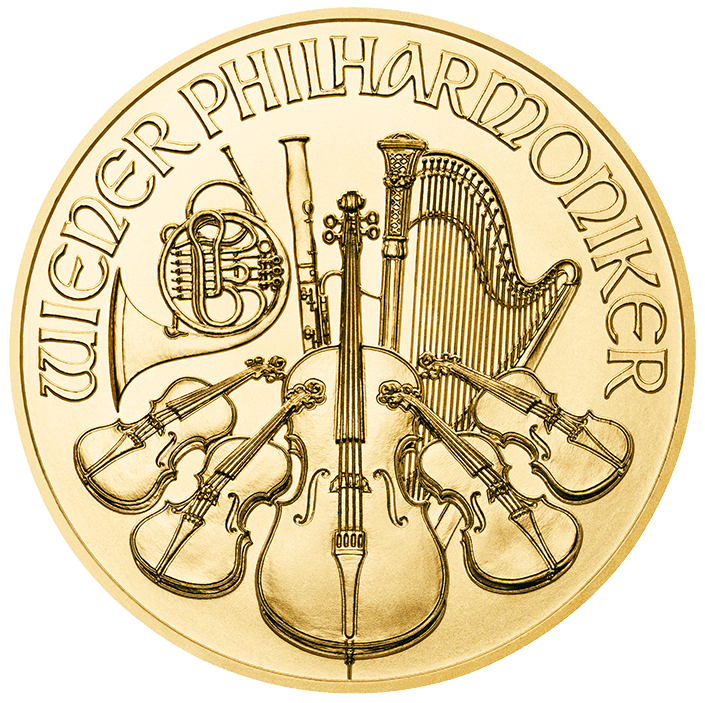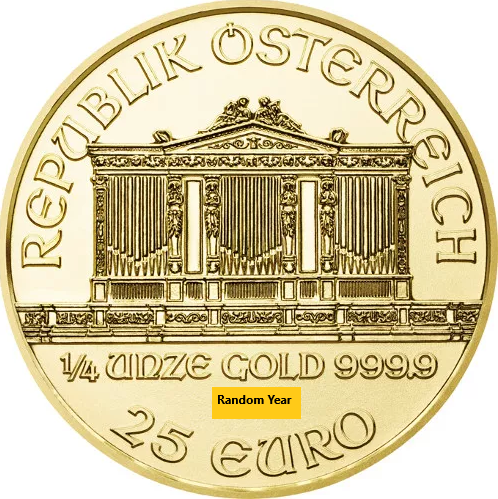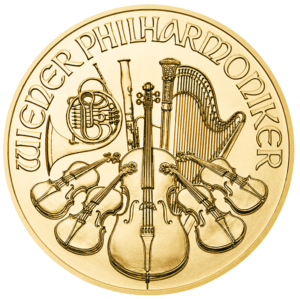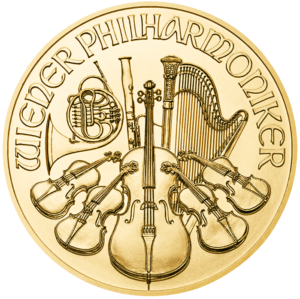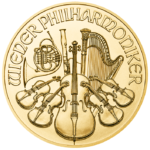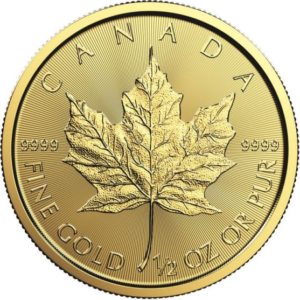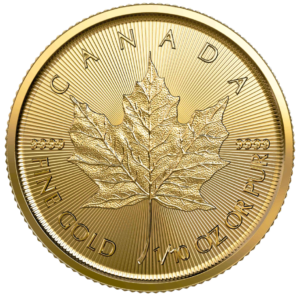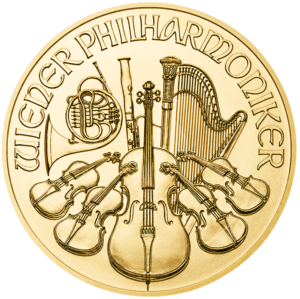The Vienna Philharmonic coin in 1/4 ounce gold: First issued in 1989 along with the 1 ounce version, it is popular as a gift. With a diameter of 22mm, it contains 7.77 grams of gold. Face value 25 Euro.
First issued in October 1989, the Vienna Philharmonic gold coin is Europe’s most successful investment coin. According to the World Gold Council, it was the best selling gold coin in the world in 1992, 1995, 1996 and 2000.
In this offering, the mint year will be random (our choice).
History and design of the coin
From November 1998 on, a change in Austrian law permitted the issue of pure gold coins for investment purposes. This is how the idea came about to design a gold coin that symbolised Austria. Numerous possible themes for the coin were discussed until finally the vote was given to music, a harmonious ambassador whose language is understood the world over. And what better to symbolise music than the world famous Vienna Philharmonic Orchestra?
The coin was designed by Thomas Pesendorfer, the Austrian Mint’s chief engraver.
For the reverse side he chose eight characteristic orchestral instruments: four violins either side of a cello in the foreground and the Viennese horn, the bassoon and the harp behind.
The obverse side features the famous pipe organ from the Goldener Saal of the Viennese Musikverein, recognised throughout the world as the backdrop to the Philharmonic’s New Year concerts. The organ case was designed by the architect Theophil von Hansen, who was responsible for the whole building. The original organ was built by Friedrich Ladegast in 1872 and since then the organ has been renovated and replaced on various occasions, the last being in 2011. Visually, the body of the organ remains unchanged despite technical alterations. Above the organ, the words “Republik Oesterreich” stand in a semi-circle, while the weight and purity of the coin, with the date of issue below, stand beneath the balustrade of the organ. At the bottom edge of the coin appears its face value.
The edge of the coin is reeded.

